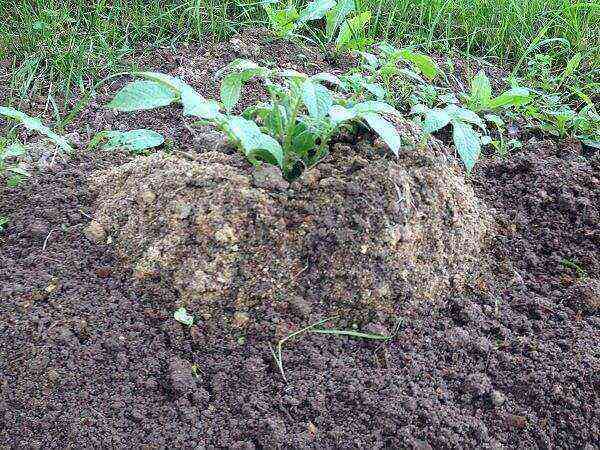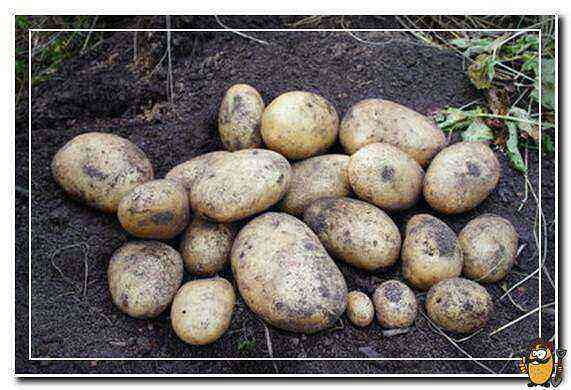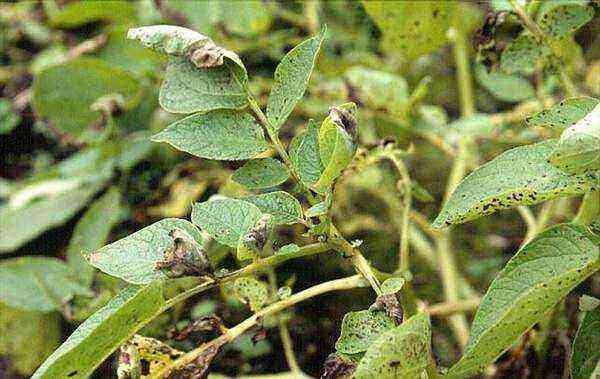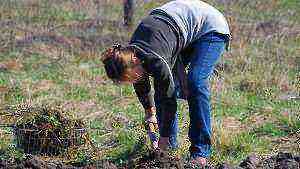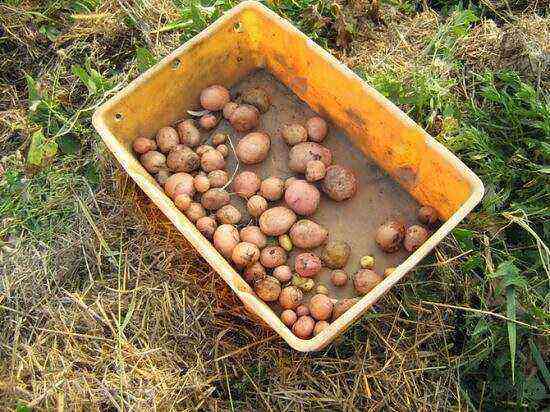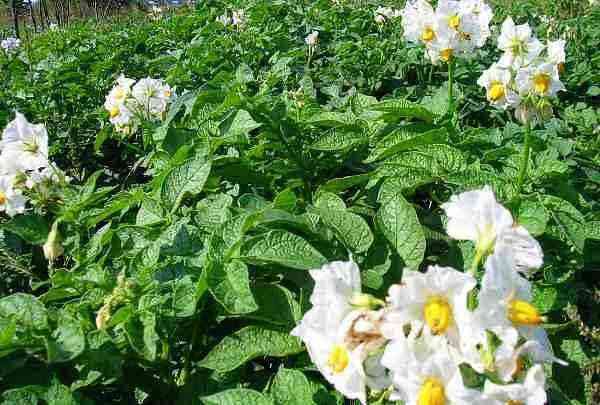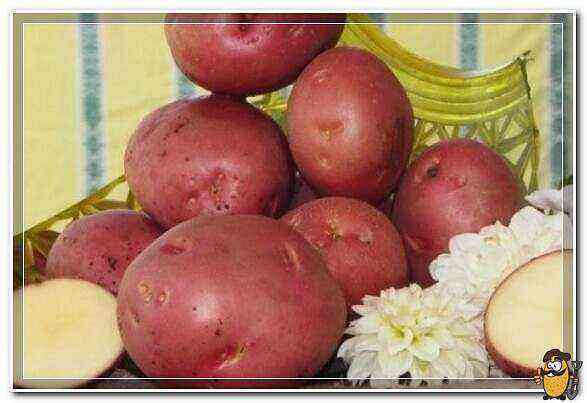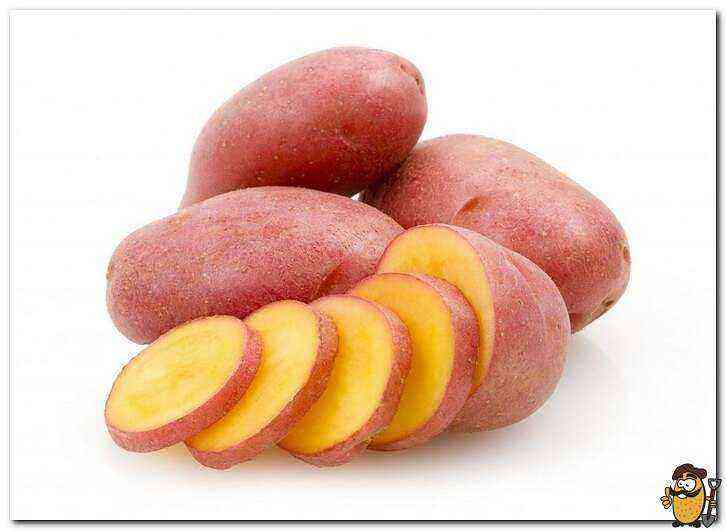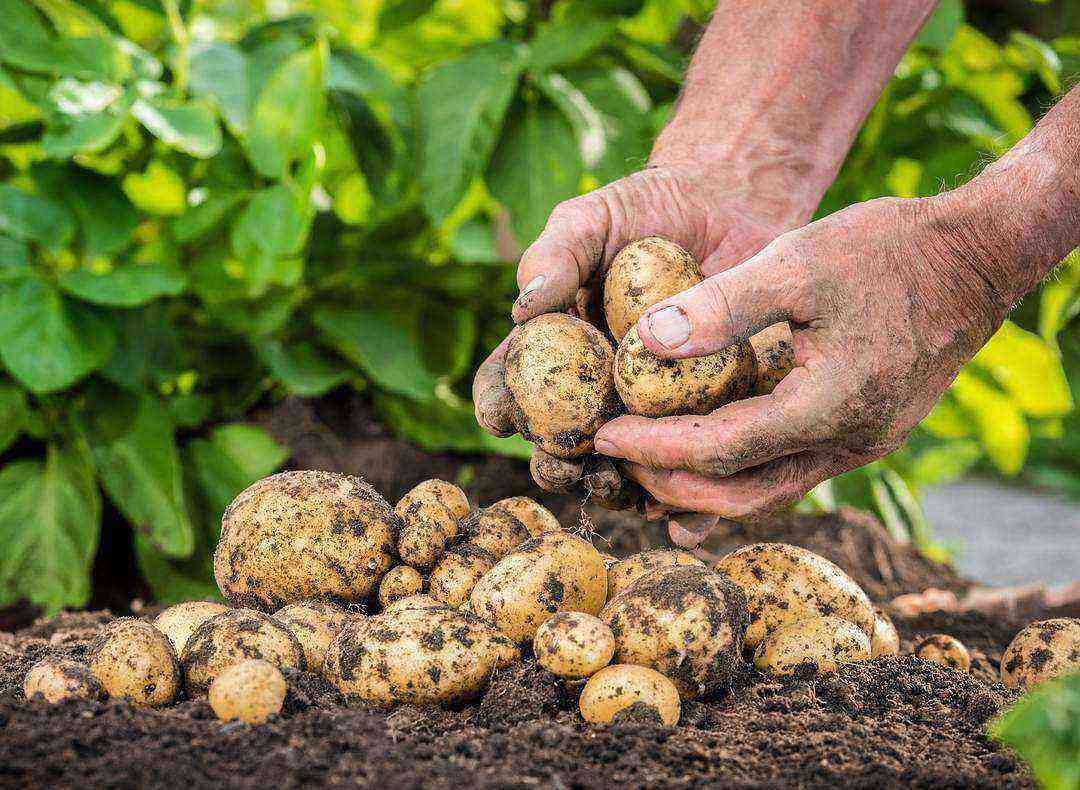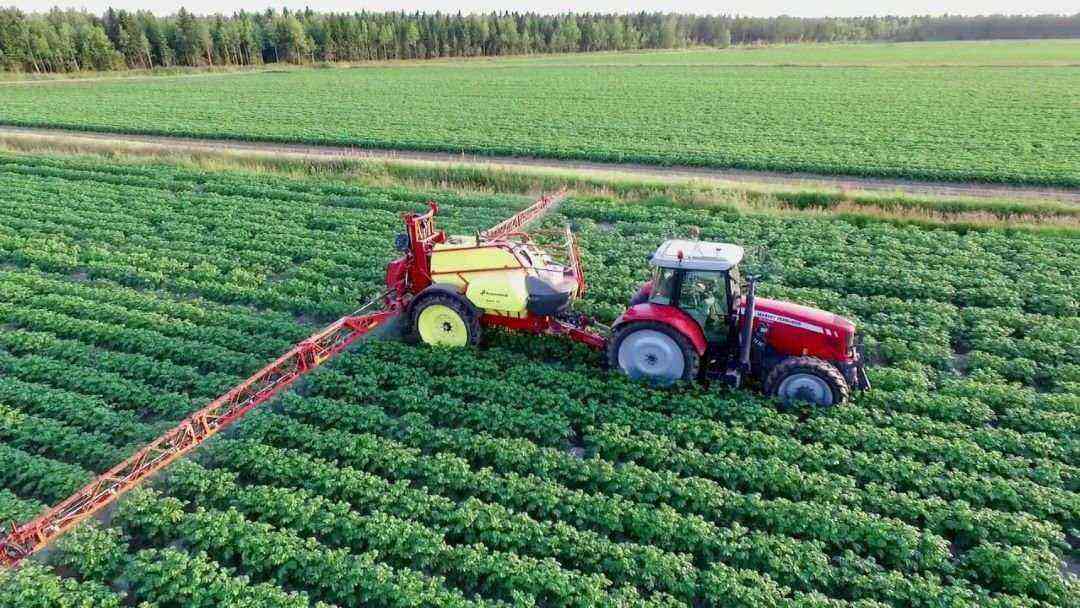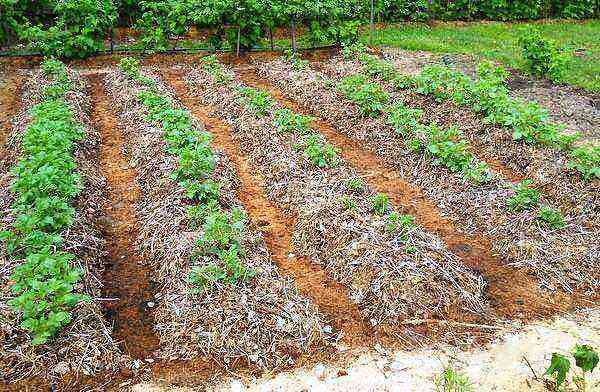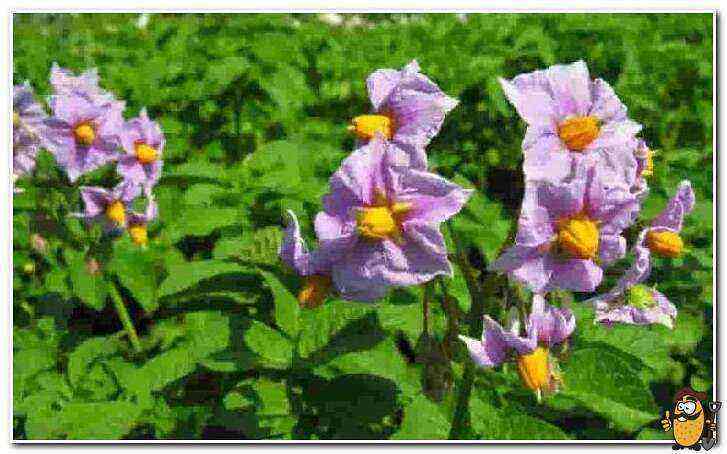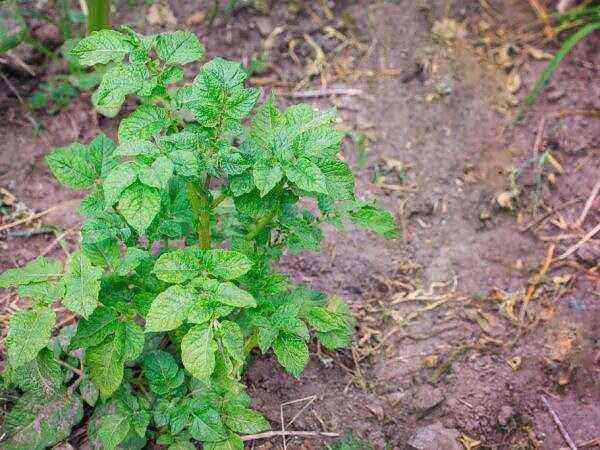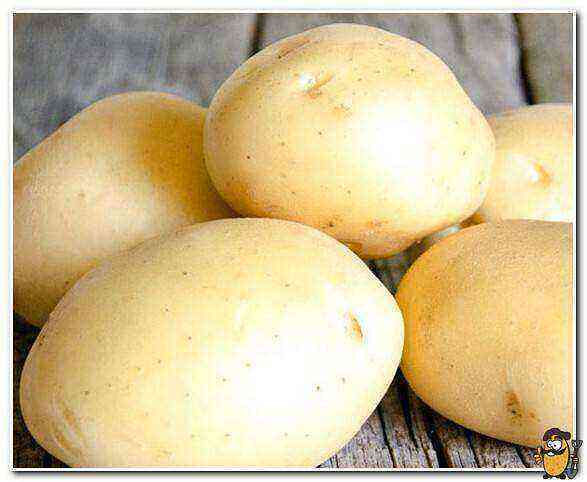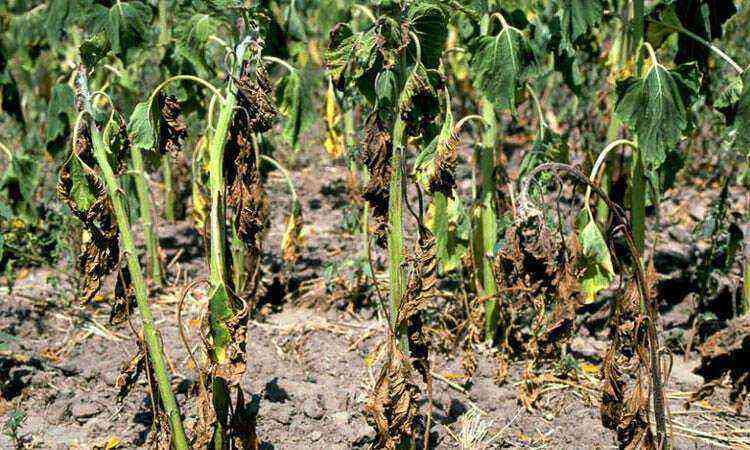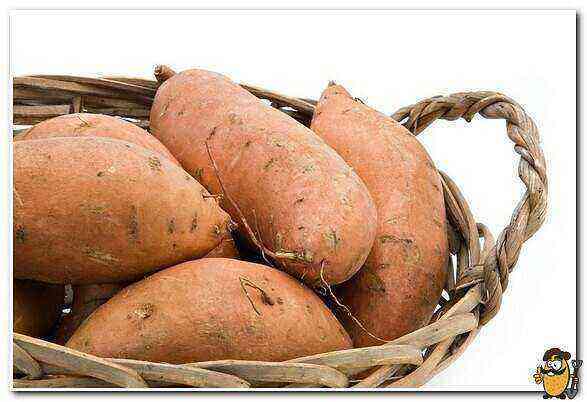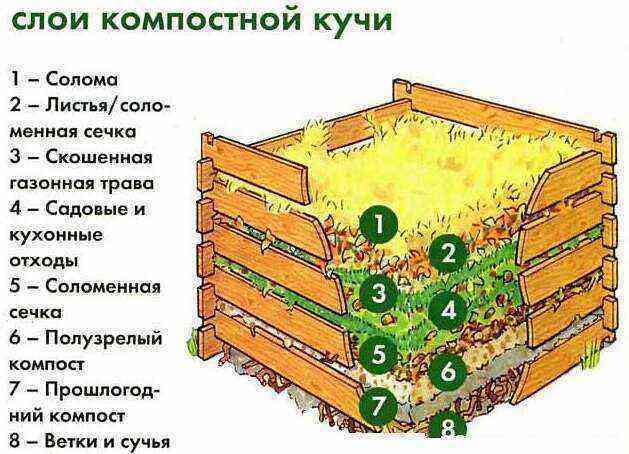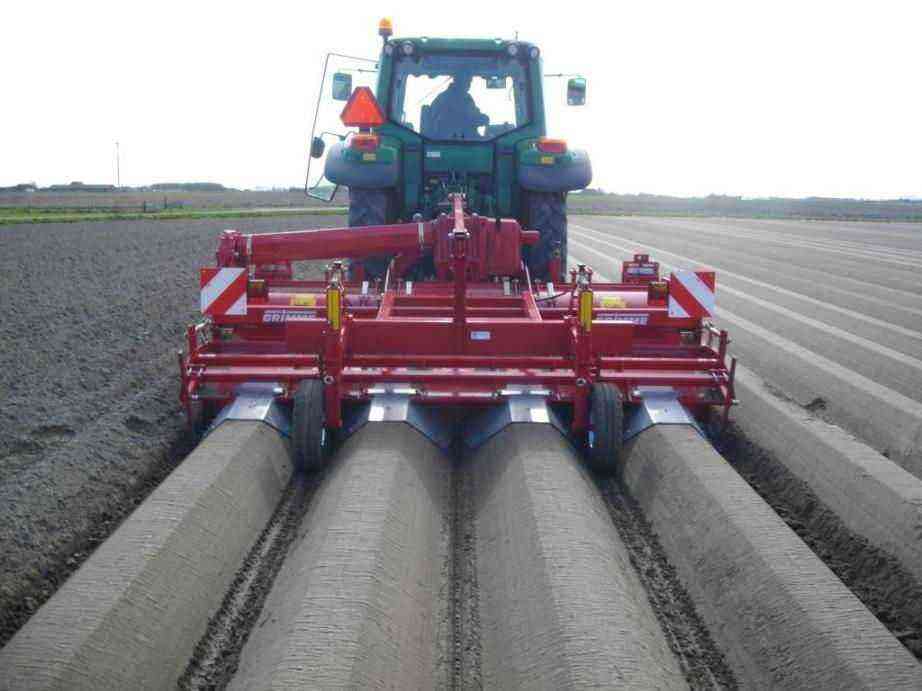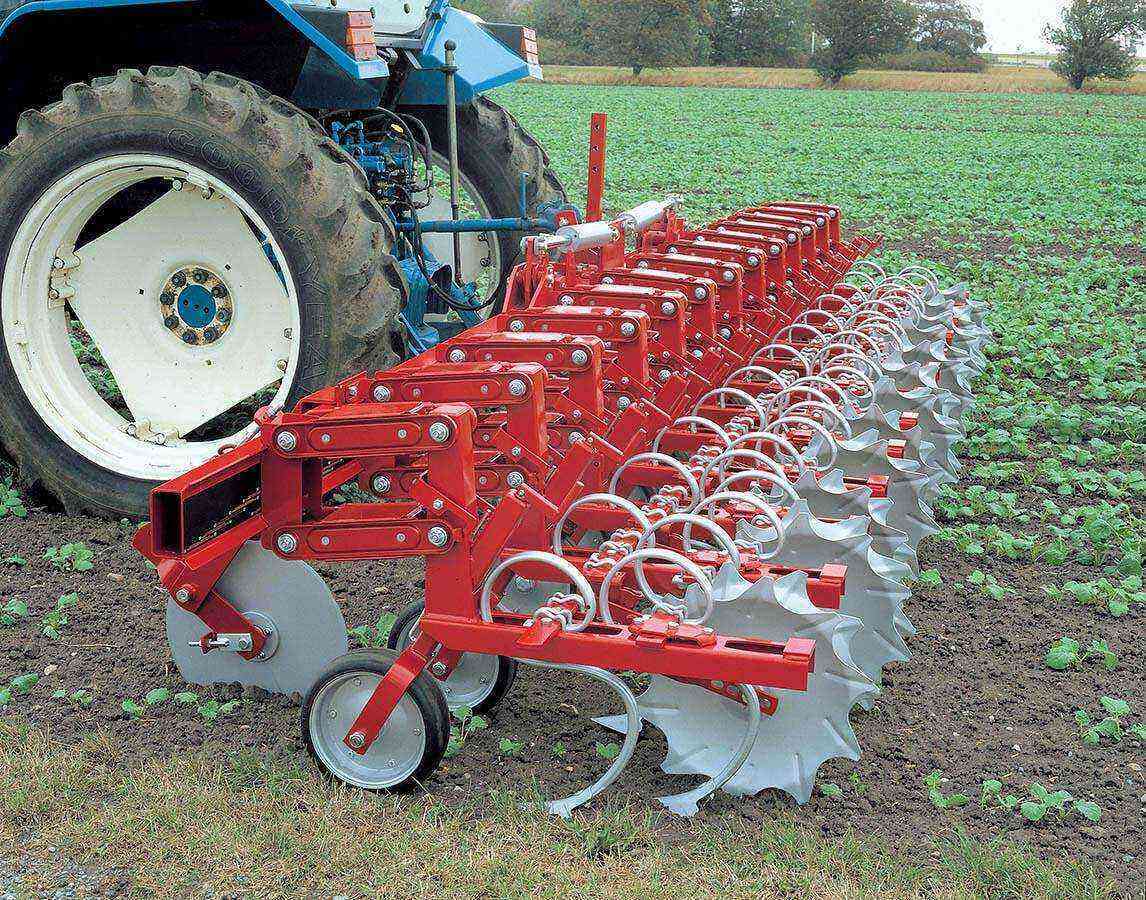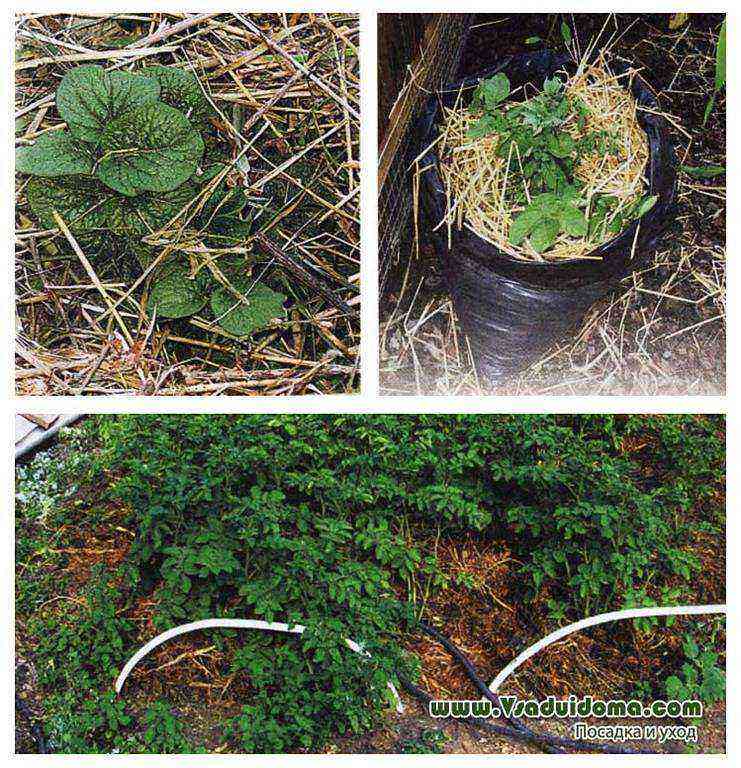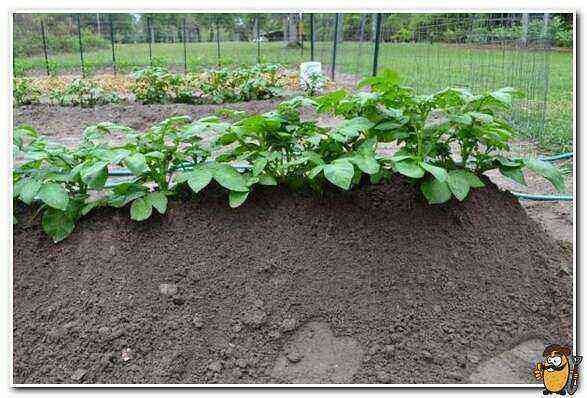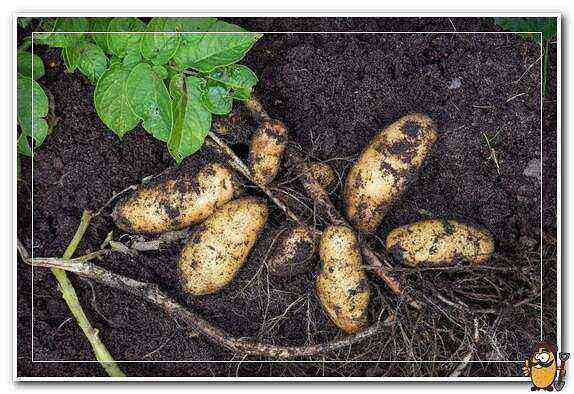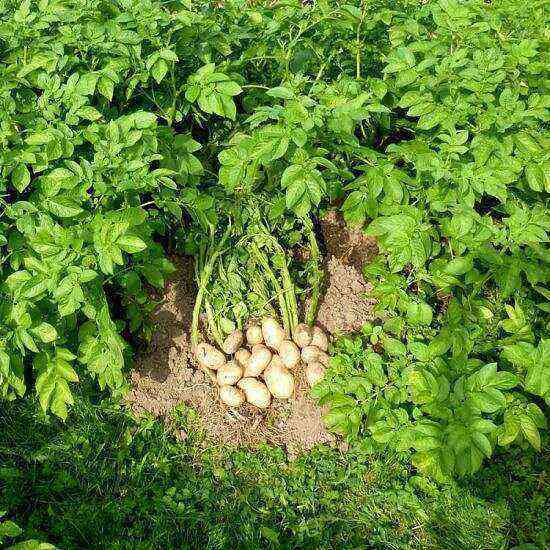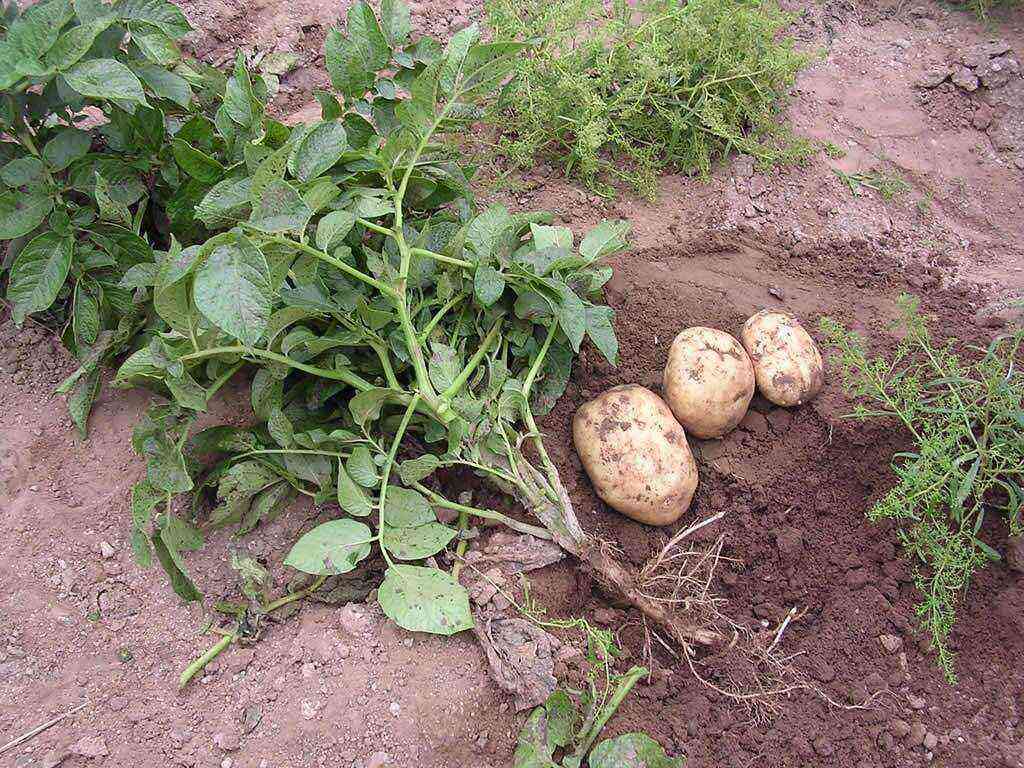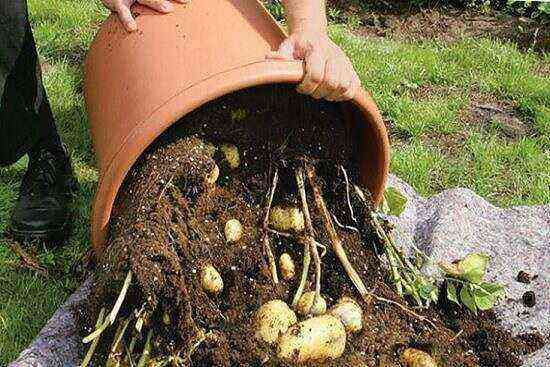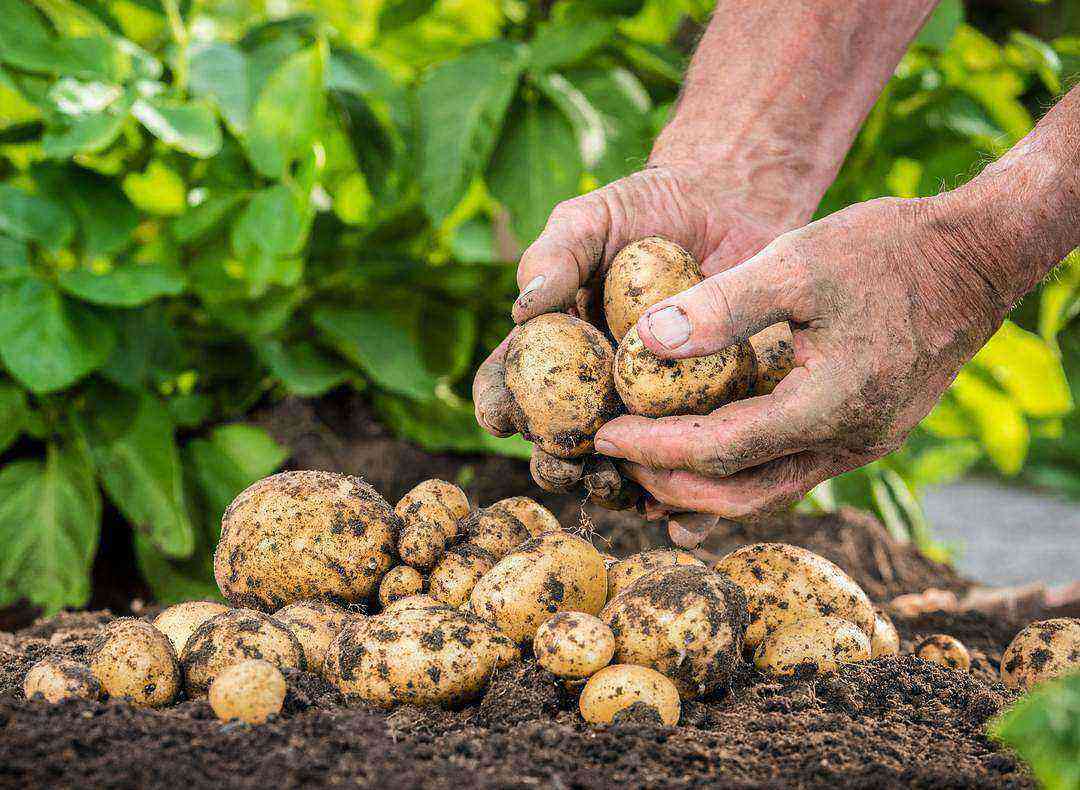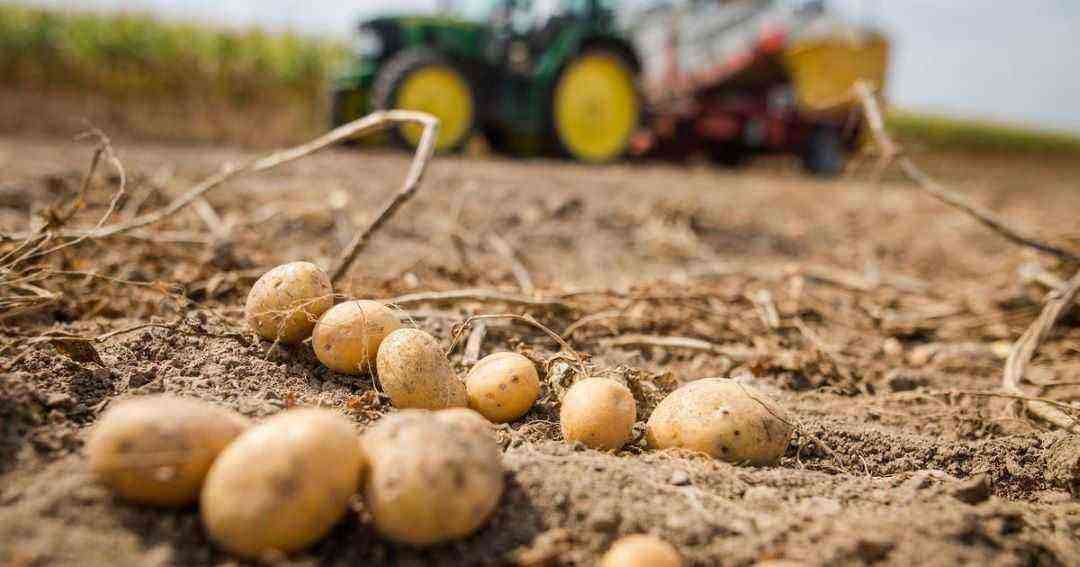Potato bushes, which are properly cared for immediately after germination, acquire immunity to various diseases, tolerate the vagaries of the weather more easily and bear fruit abundantly.
In order for young shoots of potatoes to develop normally, they need:
- air access to the root system;
- moderate warmth;
- moisture;
- useful substances (macro- and microelements).
Treatment of potato seedlings
Root tubers and young roots underground must breathe. But the crust that forms on the surface of the bed when it dries out prevents air from reaching the planted potatoes. Therefore, the soil must be loosened periodically. This procedure significantly slows down the evaporation of moisture.
With the help of loosening, barely hatched weeds that have not had time to take root, growing much faster than potatoes, are removed. While the weeds are small, it is much easier to deal with it than when it grows up.
The soil on potato plantations is loosened at intervals of 7–10 days, starting from 5–6 days after planting: in small areas – with heavy rakes, in large areas – with harrows. If the seedlings of potatoes have just emerged from the ground and reach no more than 1–3 cm in height, the use of tooth harrows or net harrows is allowed. For subsequent harrowing, until the shoots stretch up to 15 cm, hedgehogs are used.
Hilling seedlings
Usually, the first hilling is carried out when the shoots grow up to 15 cm.But if forecasters predict frosts, then even very tiny potato bushes should be covered with earth so that only the tips of the leaves are visible above the surface. Thanks to this, young, fragile stems will not freeze, and additional stolons are formed under the layer of earth. In case of prolonged frosts, one more hilling can be carried out a week after the first.
The method is not suitable for potatoes planted with eyes, sprouts or botanical seeds.
Herbicides for potato seedlings
Sometimes loosening the soil alone is not enough to completely get rid of the weeds. Wheatgrass (its roots go to great depths and are capable of piercing young tubers), sow-thistle, field bindweed are especially harmful.
On large plantations where conventional weeding is not possible, herbicides have to be applied. It is necessary to choose selective drugs designed to control the types of weeds that are most often found on the plantation.
The most popular herbicides for post-emergence potatoes are:
- “Titus”;
- “Lazurite”;
- “Antisapa”;
- “Zellek super”
- Fusilade Forte.
The instructions for the drug indicate which varieties of potatoes it cannot be used for processing. For example, “Lazurit” is not suitable for the plantation where Prolisok, Svitanok Kievsky, Lilya, Fantasy, Bagryana or Virineya are grown. It is necessary to strictly adhere to the manufacturer’s recommendations regarding the dosage and frequency of use of herbicides.
Spraying potato plantations from weeds is allowed only in dry weather, long before rain. When working with poisonous agents, wear protective clothing, glasses, gloves, and a respirator. The remains of the solution must not be poured into the sewer. In order to dispose of the herbicide, they dig a hole in a vacant lot, far from the site.
Protection of seedlings from hypothermia
Often potatoes, especially early ones, sprout during spring return frosts. To prevent the plants from freezing, they are covered with a film or spunbond.
Most vulnerable are potatoes grown from eyes, sprouts or botanical seeds. Arcs are installed over the beds with such plants, onto which a white spunbond or film is pulled. It is very important to ventilate the greenhouses during the day, and in the heat – to remove the covering material, otherwise the young bushes will suffocate.
If, nevertheless, the seedlings are frozen, it is recommended to shade them early in the morning with cardboard, old newspapers, and rags. The slower the tops thaw, the less likely it is to wilt and die.
Watering potato seedlings
Most of the water is required for potatoes during budding and flowering. Shoots hatching from the uterine tuber, at first, draw moisture from it. Watering them is necessary only in case of prolonged drought.
Watering potato seedlings is necessary in case of severe drought.
Potatoes grown from botanical seeds, eyes or shoots need to be watered much more often: such plants are very sensitive to lack of moisture. The condition of the soil is determined by touch. If the soil in the garden bed has dried up at a depth of 6–7 cm, and no rain is expected in the near future, then the plantation needs to be watered.
As a result of experiments, agronomists came to the conclusion that potatoes react painfully to a sharp change in the level of soil moisture: the transition from complete dryness to excessive moisture. Therefore, it is important to water the plants before the leaves begin to wither from dehydration. The best option for organizing watering of potatoes is a drip irrigation system, due to which moisture flows to each bush little by little, but evenly.
With the threat of night or morning frosts, if young seedlings cannot be covered or hilled, they are generously sprayed with water in the evening.
Fertilization of potato seedlings
Usually potatoes are fertilized at the time of planting. If a sufficient amount of organic matter or mineral fertilizers is introduced into the holes or furrows, young shoots assimilate the nutrients contained in the soil and do not yet have time to feel “starvation”. It should be noted that, although potatoes are very fond of nitrogen fertilization, an excess of nitrates can lead to uneven development of bushes: high, dense tops and small tubers.
But there are situations when it is necessary to feed the potatoes after germination:
- when planting, not enough fertilizer was applied to the soil;
- the stems are too thin, stunted, the leaves have an unhealthy yellowish tint;
- potatoes are planted with eyes, seeds or sprouts;
- seedlings froze during recurrent frosts.
It is convenient to combine top dressing with watering.
Organic dressing recipes
- Pour 100 kg of nettle and a bucket of rotted manure into a barrel with a volume of 10 liters. Insist for 4–5 days (more is possible, the aged infusion is even more effective). Before watering, dung-nettle slurry is diluted in a ratio of 1: 3, half a liter is poured under each bush;
- Dissolve bird droppings in water or nettle infusion in a ratio of 1:20. Top dressing must be used immediately after preparation, since it loses its beneficial properties when infused.
It is even easier to feed potato seedlings with mineral fertilizers. If the plants are planted in double rows, a groove 5 cm deep is made in the middle of the bed and granular fertilizer is poured there at the rate of 5–6 g per running meter of the bed. For early varieties of potatoes or in the event that the seedlings are frozen (so that top dressing works faster), use nitroammophoska, for later varieties – nitrophoska. Then the groove is sprinkled with earth, and the bed is watered. Another option: 2–3 g of fertilizer is embedded in the soil at a distance of 5–6 cm from the potato stalks.
For stunted or frost-damaged tops, foliar feeding is useful:
- 20 g (2 tablespoons) of urea per 10 liters of water. You can add any complex fertilizer with microelements (for example, “Nutrivant Plus ™ potatoes”);
- 10 g (2 teaspoons) nitroammophoska per 10 liters of water.
To increase the immunity of potatoes, immediately after the emergence of seedlings, it is recommended to spray them with a solution of “Biostim” or “Epina-Extra”.
